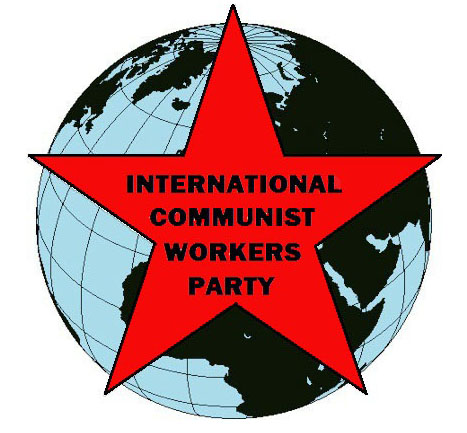
 |
FIGHT FOR COMMUNISM! |
International Communist Workers Party | |

Capitalism everywhere relies on racism for super-profits and to weaken the working class. China is no exception. Only another revolution – this one for real communism! – can end racism there.
The Europeans who divided the world population into “races” considered all Asian people as one “race.” But Asia has thousands of distinct indigenous groups.
In China, 55 officially-recognized minority “nationalities” include about 9% of the population. A few – notably the Manchu – are as well off as the Han majority. Most, however, face super-exploitation and super-oppression much like black workers in the US.
The largest groups include 9 million Uyghur and 10 million Hui, mainly Muslims in Northwest China, and 9 million Miao and 17 million Zhuang, mainly in South and Southwest China.
Here we’ll take a closer look at the Miao people. Economically they are among China’s poorest but they have a rich history of class struggle.
Miao: Rebellious and Super-Exploited
“Miao” peoples lived without classes or exploitation for centuries until after the 3rd century CE. Vestiges of their communal villages remained at the time of the 1949 revolution.
Guizhou province, home of many Miao, was annexed by the Ming Dynasty in the 14th century. Mass Miao rebellions exploded in the 14th, 15th, 18th and 19th centuries. Han and Manchu rulers responded with brutal repression.
After the 1911 revolution, Sun Yat-sen proposed that China “follow the example of the United States of America” to unite China into “a single cultural and political whole” by encouraging assimilation and discouraging indigenous culture. As if the USA, in this era of lynching and eugenics, were a model of anti-racism!
No wonder, then, that the Guizhou masses welcomed the Chinese Communist Party (CCP) during the Long March (1934–1935). Many joined or supported the Red Army.
Chinese Communism and the “National Question”
The 1949 revolution improved the lives of the Miao masses through land reform and collectivization. The CCP struggled to reduce the gaps between historically super-exploited ethnic minority and Han workers.
But their political line, like the Soviets, centered on “national minorities” instead of racism as a class question.
The officially-recognized “ethnic groups” were categories constructed by government authorities. This was similar to the way Western capitalism invented “races.” The term “Miao,” for example, included half a dozen distinct cultural groups labeled with the Chinese word for “weeds.”
Official ethnic groups were organized into “autonomous” areas. However, most areas were actually multi-ethnic. The Miaos lived harmoniously with Zhuang, Li, Han and other people.
National policy also included “affirmative action” programs that gave some rural ethnic minority youth opportunities to move to urban areas. As with black people in the US, this made little difference for the masses.
In 1964, after the Sino-Soviet split and with the US escalating its war on Vietnam, critical Chinese industry and power generation was moved inland. Guizhou became the industrial “Third Front.” Its economy developed rapidly – along socialist (actually capitalist) lines.
Socialism kept a wage-based money economy instead of organizing distribution based on need. As in the west, the wage system guaranteed that those historically disadvantaged by racism would remain worse off. The wage system is the material basis of racism today. Only communism can end it.
In the 1960s, Guizhou played a big part in the Cultural Revolution. It became a prime destination for city cadres “going to the countryside.” Indigenous cultural practices were discouraged, but most Miaos welcomed “modernization.”
Today, Miao workers are the poorest and most intensely exploited among China’s ethnic groups. (See box below)
Guizhou remains a center of militant class struggle and communist potential.
2008: Tens of thousands torched government buildings and cars, protesting a police cover-up of a schoolgirl’s death (probably at the hands of an official’s son).
2010: Over a thousand high school students trashed the school cafeteria after officials announced another price increase for meals.
2014: Ten thousand took off work and school to protest a county government’s expropriation of large tracts of land. They, too, fought the cops.
2015: Thousands of students at two high schools rebelled after hundreds were hospitalized for food poisoning.
These reform struggles, no matter how militant, can’t end racist abuse. But when these workers and youth mobilize for communism they will give leadership to billions in China and around the world.
If you know people who read Mandarin, please show them a short summary of the ICWP manifesto “Mobilize the Masses for Communism” at icwpredflag.org/Chin.html .
RACIST SUPER-EXPLOITATION AND SUPER-OPPRESSION: THE MIAO IN CHINA
In 2000-2005 only 32% of Miao people lived in the better-off urban areas, compared with 44% of the Han.
Miaos in urban areas earned 76% of what Han workers earned. In rural areas, they only earned 66% of the average Han wages, and Miaos worked longer hours at lower wages to get even that.
About 25% were illiterate, compared with 10% of Han.
Over 10% live below the official poverty line. They are less likely to have access to a telephone and much more likely to live in clay or straw dwellings.
About 25% of villages in minority areas have no health clinic, compared with 7% of villages that are not in minority areas.
Figures for the Zhuang people are similar.
In contrast to racist capitalism, real communism provides for everybody “according to need.” Mobilizing the masses for communism will mean a systematic struggle against long-established racist practices and ideas. That struggle starts now.
Part II of this series will look at anti-black racism in China and say more about how communism will end racism everywhere.